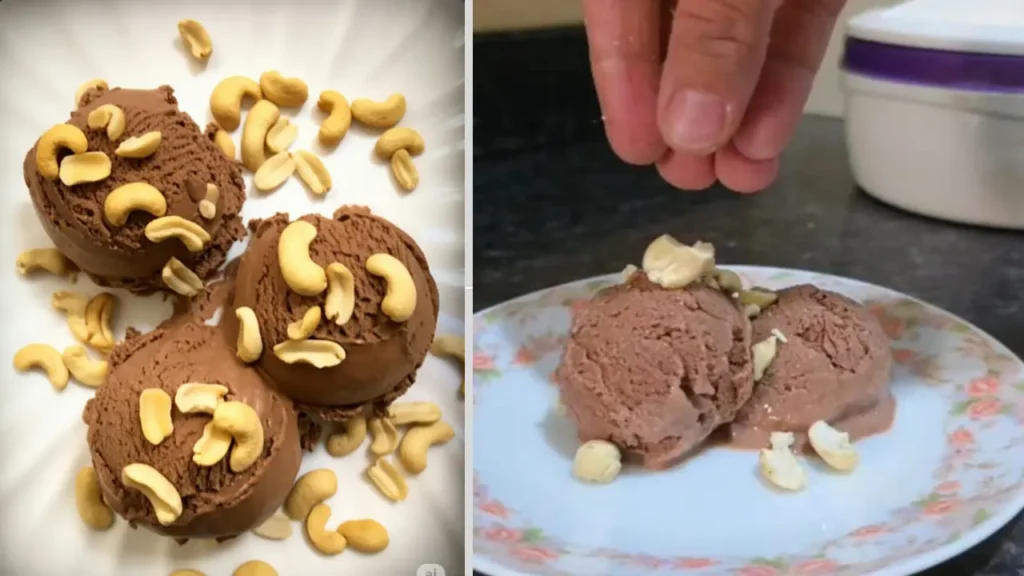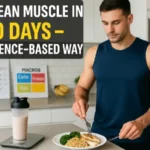Three years ago, I was staring at my kitchen freezer at 9 PM, craving something sweet after a brutal leg day. The choice seemed simple: destroy my macros with regular ice cream or choke down another chalky protein shake. That’s when something clicked—why can’t ice cream work FOR my fitness goals instead of against them?
Fast-forward to today, and my homemade 35g protein-rich ice cream has become the secret weapon I share with every client who thinks they need to choose between results and satisfaction. Spoiler alert: you don’t.
The Protein Problem Nobody Talks About
Here’s what most people get wrong about protein intake. According to the WHO, adults need about 0.8 grams per kilogram of body weight daily. But here’s the catch—that’s just to avoid deficiency, not to actually thrive. If you’re strength training, playing sports, or trying to maintain muscle while losing fat, you’re looking at nearly double that amount.
I’ve watched countless clients struggle with this gap. They’ll nail their workouts and track their calories religiously, but then hit a wall because they’re chronically under-eating protein. The usual solutions? Protein bars that taste like cardboard or shakes that leave you feeling like you drank chalk water.
What if I told you there’s a way to get 35 grams of high-quality protein in a form that makes you actually excited for dessert time?
Why Regular Ice Cream Sabotages Your Progress
Traditional ice cream is basically a sugar bomb wrapped in dairy fat. A typical scoop delivers about 14 grams of sugar and maybe 4 grams of protein—if you’re lucky. That’s a recipe for blood sugar spikes, energy crashes, and basically undoing all the hard work you put in at the gym.
But here’s what really bothers me about the health conversation around ice cream. Everyone just says “avoid it” without offering a realistic alternative. People don’t stop craving creamy, cold, sweet treats just because they start working out. They need better options, not deprivation.
The Science Behind Protein Ice Cream That Actually Works
The magic happens when you flip the macro profile completely. Instead of sugar as the primary ingredient, we’re using high-quality protein powder as the base. The sweetness comes from natural alternatives like stevia, and the creamy texture develops from strategic use of Greek yogurt or cottage cheese.
This isn’t just about hitting your protein goals—though getting 35 grams in one serving definitely helps with that. The protein content actually changes how your body processes the entire treat. You get sustained energy instead of a sugar crash, better appetite control for hours afterward, and nutrients that support muscle recovery rather than fat storage.
My Simple 4-Ingredient Formula
After experimenting with dozens of combinations, I’ve perfected a recipe that requires minimal ingredients and zero special equipment. You probably have most of what you need already.
The foundation starts with 50 grams of low-fat cottage cheese—this gives us the creamy base and adds about 12 grams of protein right off the bat. Then we add one scoop of high-quality chocolate whey protein powder (that’s another 20-25 grams of protein, depending on your brand).
For liquid, I use about 200 milliliters of unsweetened almond milk or low-fat regular milk. The final touch is one teaspoon of unsweetened cocoa powder for that rich chocolate flavor that makes this feel like a real dessert.
The preparation couldn’t be simpler. Blend everything together until smooth—this takes about 30 seconds in any decent blender. Taste and adjust sweetness with stevia if needed. Pour into a container and freeze for 4-5 hours.
Ingredients
| Ingredient | Quantity |
|---|---|
| Low-fat paneer (cottage cheese) | 50g |
| Double-toned milk | 200–250 ml |
| Unsweetened cocoa powder | 1 teaspoon |
| Chocolate whey protein powder | 1 scoop |
| Sugar-free sweetener or stevia (optional) | To taste |

What Makes This Different From Store-Bought Options
I’ve tried every protein ice cream brand on the market, and honestly, most of them disappoint. They’re either loaded with artificial ingredients I can’t pronounce, or they have that weird, gummy texture that screams “diet food.”
The brands that do taste decent often fall short on protein content. Halo Top gives you about 20 grams per serving, which is better than regular ice cream but still not optimal if you’re serious about your goals. Plus, at five dollars per pint, you’re paying premium prices for what amounts to flavored air.
Making it yourself means you control every ingredient. No weird stabilizers, no artificial colors, and you can adjust the protein content based on your specific needs. Some days I want the full 35-gram punch; other times I’ll dial it back to 25 grams and add some fresh berries.
When Protein Ice Cream Actually Helps Your Goals
This isn’t just a guilt-free dessert—it’s a strategic tool. I have clients who eat this as a post-workout recovery meal, especially after evening training sessions. The combination of fast-digesting whey protein and some natural sugars from the milk creates an ideal recovery environment.
Others use it as a high-protein breakfast on busy mornings. Think about it: 35 grams of protein, minimal prep time, and it feels like you’re having dessert for breakfast. Compare that to a typical breakfast pastry that leaves you hungry an hour later.
The appetite control aspect surprised me initially. Regular ice cream triggers cravings because of the sugar rollercoaster. This version actually helps suppress appetite for hours because protein is the most satiating macronutrient.
The Mistakes I Made (So You Don’t Have To)
My first attempts were disasters. I used too much protein powder, thinking more was better, and ended up with something that tasted like frozen chalk. The lesson: balance is everything. One scoop of protein powder per serving is the sweet spot.
I also learned that not all protein powders work equally well. Casein protein creates a weird, dense texture when frozen. Whey isolate can be too light. Regular whey concentrate with some added ingredients for flavor works best.
Another mistake was over-complicating the recipe. I tried adding egg whites, xanthan gum, and all sorts of fancy ingredients I saw in other recipes. The simple version always tastes better and has a more natural texture.
Read Also: Are Rice Flakes Good for Weight Loss? Discover Benefits
Real Results From Real People
My client Sarah lost 15 pounds last year while never feeling deprived because she had this ice cream almost daily. She calls it her “sanity saver” because it eliminated her late-night kitchen raids that used to derail her progress.
Mark, a powerlifter, uses it as his bedtime protein source. The slow-digesting protein from the cottage cheese feeds his muscles overnight, and he wakes up actually looking forward to what he calls his “gains cream.”
The Bottom Line on Protein Ice Cream
You don’t have to choose between enjoying food and reaching your goals. This isn’t about restriction or substitution—it’s about upgrading to something that actually serves your body better while satisfying those dessert cravings.
The best part? Once you make this a few times, you’ll stop seeing regular ice cream as a treat. When you can have something that tastes amazing AND moves you closer to your goals, why would you settle for empty calories that leave you feeling worse?
Try this recipe this week. Adjust the flavors to your preferences, experiment with different protein powder varieties, and see how it fits into your routine. Your taste buds and your biceps will thank you.
CTA: Tried this protein-packed delight? Share your experience in the comments and tag a friend who needs this upgrade!

Fitness Coach | Fat Loss Expert | Nutritionist
Online Fitness Trainer – Custom workouts for fat loss, muscle gain & home fitness.
Certified Nutritionist (NASM) – Smart diet plans for faster results.
Transformation Specialist – Proven programs to reshape your body & health.



